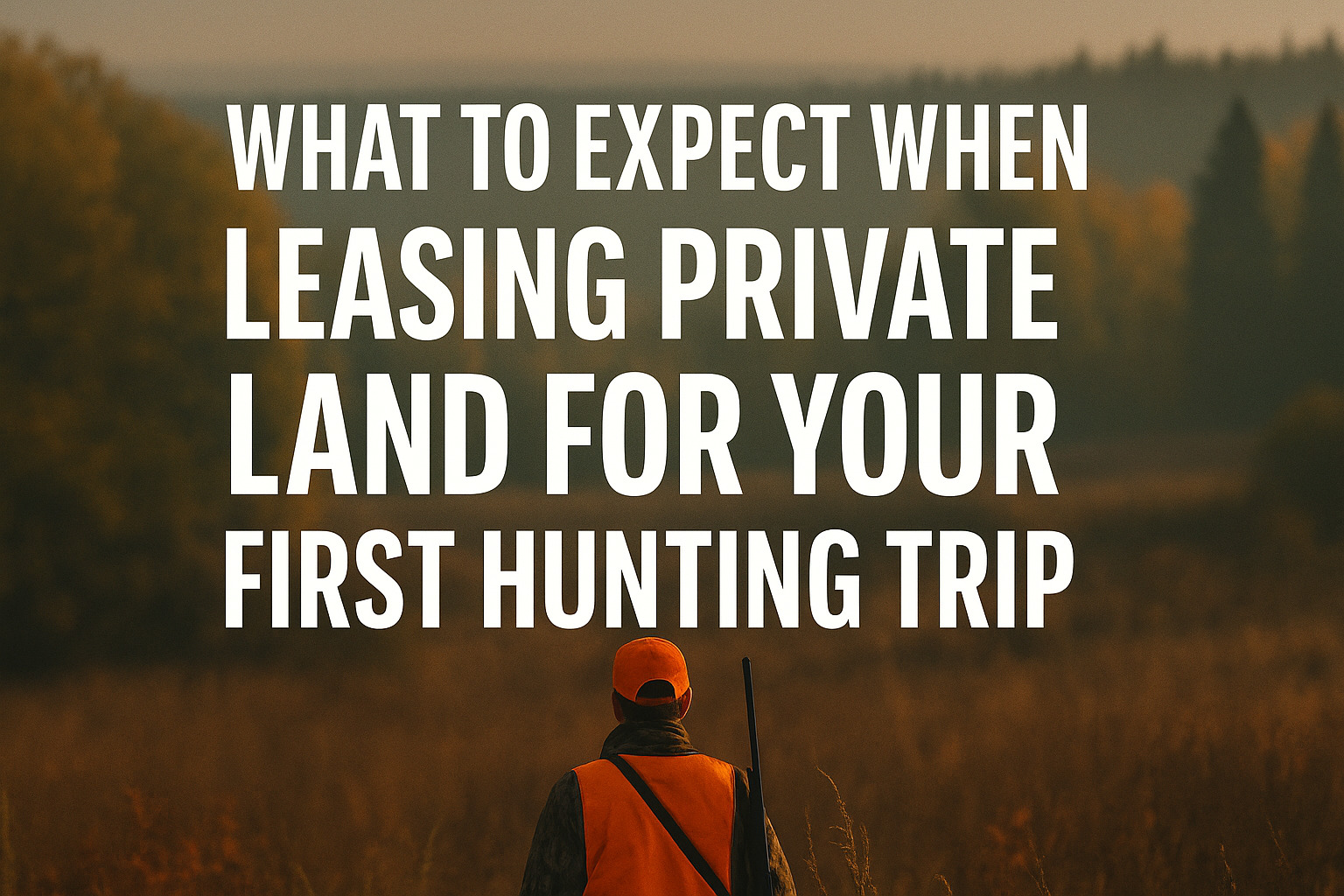What to Expect When Leasing Private Land for Your First Hunting Trip (Costs, Rules, Etiquette)
Introduction
Leasing private land for your first hunting trip can be a game-changer. Instead of competing with crowds on public land, you’ll enjoy predictable access, clear rules, and higher-quality hunting opportunities.
With LandTrust, hunters connect directly with landowners to secure access, review rules upfront, and hunt with confidence thanks to insurance-backed safety protections. Plus, tools like Field Notes keep you updated in real time before and during your trip.
This guide walks you through everything a first-time hunter should expect when booking a private hunting lease: from costs and rules to etiquette and on-the-ground experiences.
How Do Hunting Leases Work?
A hunting lease is a formal agreement between a landowner and hunter that grants access to private property for hunting. Leases vary in duration, exclusivity, and terms:
- By duration: daily, short-term (weekend/season), or annual.
- By access: exclusive (you and your group only) or shared (other hunters may have access).
- By scope: may include specific species, weapons, or seasons.
- Guest policy: some leases allow family or friends; others are strictly individual.
What’s typically included: access routes, parking areas, stands/blinds, and sometimes lodging or amenities.
What’s not usually included: food, guides, and processing.
Booking through LandTrust is straightforward:
- Browse properties.
- Message the landowner.
- Confirm terms and rules.
- Pay securely.
- Receive arrival instructions.
Hunting Lease Costs & Pricing
The cost of a hunting lease depends on acreage, species, exclusivity, and region.
Typical Regional Ranges
Region | Seasonal Lease ($/acre) | Daily Lease (per hunter)
South | ~$10–$25 | $100–$600+
Midwest | ~$25–$45 | $150–$800+
Northeast | ~$20–$50+ | $200–$1,000+
- South: Entry pricing often starts near $10/acre for seasonal access.
- Midwest: $25–$40+/acre is common, especially for trophy whitetail areas.
- Northeast: Premium properties may run $40–$50+/acre.
Daily leases can range widely — from ~$40 for upland bird hunts to $4,500+ for specialty trophy hunts with lodging.
Budgeting tips: account for deposits, cleaning/damage fees, guest charges, and optional add-ons like lodging or guided hunts.
Rules, Laws & Insurance
Even on private land, state seasons, bag limits, and licensing rules apply. You’ll need a written lease or permission slip at all times.
Examples:
- Montana FWP requires written permission for all private-land hunts.
- Virginia DWR and Minnesota DNR publish guidelines on permission and tagging.
- USFWS enforces federal migratory bird rules across all lands.
Insurance matters. LandTrust provides built-in liability coverage for both hunters and landowners, reducing the risk of disputes. Know what’s covered (liability) and what’s not (your gear, personal health coverage).
Hunting Lease Etiquette: How to Be Invited Back
Good etiquette is the difference between a one-time hunt and being welcomed back next season.
Pre-arrival:
- Send a short message: ETA, number of hunters, vehicles, and confirm the gate code.
On property:
- Close gates behind you.
- Drive slowly, park only where permitted.
- Avoid disturbing livestock and crops.
- Pack out trash and respect quiet zones.
Equipment and use:
- Follow stand/tree policies.
- Ask before placing trail cameras.
- Follow ATV/UTV rules.
Post-hunt:
- Leave the property as you found it.
- Share respectful photos and a thank-you note.
- Provide feedback to the landowner.
Lease Agreement Tips & Red Flags
When reviewing a hunting lease agreement, look for:
Must-have clauses:
- Term/dates.
- Property boundaries with maps.
- Guest limits.
- Species and weapons allowed.
- Game retrieval rules.
- Vehicle and gate policies.
Red flags:
- No written rules.
- Vague or missing property maps.
- No emergency contact.
- Hidden or unclear fees.
Your First Hunting Trip: Step-by-Step
Here’s a simple timeline of what to expect:
- Arrival and orientation – Meet the landowner, confirm boundaries and maps, review Field Notes.
- During the hunt – Mark GPS points, respect quiet hours, follow retrieval protocols.
- After the shot – Use designated field dressing or recovery areas; follow disposal rules.
- Departure – Close gates, clean up, check out, and thank the landowner.
Regional Variations & Season Nuance
Private land hunting rules differ by state:
- Blaze orange requirements vary.
- Tagging and transport laws still apply.
- Weapon rules (rifle, shotgun, archery) may differ by season.
Always check your state’s Department of Natural Resources (DNR) regulations before booking.
Hunting Lease FAQs
How much is a hunting lease per acre?
Seasonal leases typically range from $10–$50 per acre, depending on region and property quality.
How long do hunting leases last?
Options include daily, weekend/seasonal, or annual leases, with annual often the most cost-effective for frequent hunters.
Do I need insurance to lease private land?
Yes — liability insurance is standard. LandTrust includes coverage in every booking.
How many acres do I need for deer hunting?
Generally 10–50+ acres per hunter, depending on terrain and hunting pressure.
Are guests allowed on a hunting lease?
Guest policies vary. Always confirm in writing with the landowner.
Is leasing worth it vs. public land or clubs?
For hunters seeking quality, predictability, and lower pressure, private leases often provide a better experience.
Conclusion
Leasing private land for hunting gives you peace of mind, better access, and a safer, more enjoyable hunt. For first-timers, it means fewer surprises and clearer expectations.
With LandTrust, you can:
- Browse private hunting leases near you.
- Message landowners directly.
- Hunt with confidence knowing you’re insured and rules are clear.
Explore private hunting leases on LandTrust and download the First-Timer’s Hunting Lease Checklist today.

